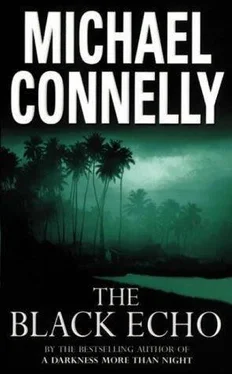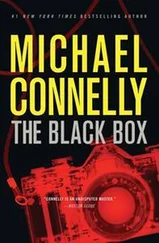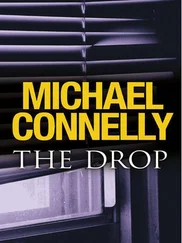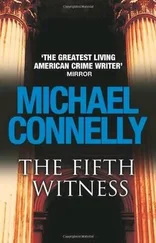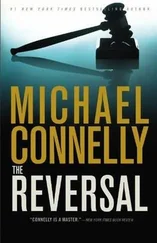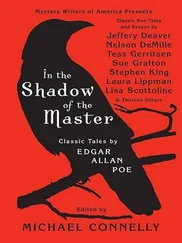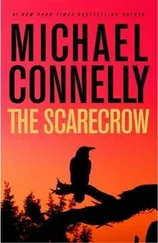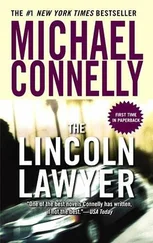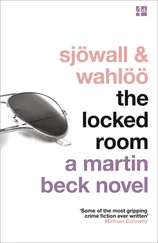“Okay then,” Edgar called out. “I got dibs after you, Mink.” Then Edgar lowered his voice and turned to Bosch. “Who you think he’ll put me with?”
“Pounds? I don’t know.” It was like guessing who your wife would marry after you punched the time clock for the last time. Bosch wasn’t all that interested in speculating who would be partnered with Edgar. He said, “Listen, I have to do some things.”
“Sure, Harry. You need any help, anything from me?”
Bosch shook his head and picked up the phone. He called his lawyer and left a message. It usually took three messages before the guy would call back, and Bosch made a note to call again. Then he turned his Rolodex, got a number and called the U.S. Armed Services Records Archive in St. Louis. He asked for a law enforcement clerk and got a woman named Jessie St. John. He put in a priority request for copies of all of Billy Meadows’s military records. Three days, St. John said. He hung up thinking that he would never see the records. They’d come but he wouldn’t be in this office, at this table, on this case. Next he called Donovan at SID and learned there had been no latent prints on the needle kit found in Meadows’s shirt pocket and only smears on the can of spray paint. The light-brown crystals found in the straining cotton in the kit came back as 55 percent pure heroin, Asian blend. Bosch knew that most heroin dealt on the street and shot into the vein was about 15 percent pure. Most of it was tar heroin made by Mexicans. Somebody had given Meadows a very hot shot. In Harry’s mind, that made the tox tests he was waiting for a formality. Meadows had been murdered.
Nothing else from the crime scene was of much use, except Donovan mentioned that the freshly burned match found in the pipe was not torn from the matchbook in Meadows’s kit. Bosch gave Donovan the address of Meadows’s apartment and asked him to send a team out to process it. He said to check the matches in an ashtray on the coffee table against the book in the kit. Then he hung up, wondering if Donovan would send somebody before word spread that Bosch was off the case or suspended.
The last call he made was to the coroner’s office. Sakai said he had made next-of-kin notification. Meadows’s mother was still alive and was reached in New Iberia, Louisiana. She had no money to send for him or bury him. She hadn’t seen him in eighteen years. Billy Meadows would not be going home. L.A. County would have to bury him.
“What about the VA?” Bosch asked. “He was a veteran.”
“Right. I’ll check it out,” Sakai said and hung up.
Bosch got up and took a small portable tape recorder from one of his drawers in the file cabinets. The bank of files ran along the wall behind the homicide table. He slipped the recorder into his coat pocket with the 911 tape and walked out of the squad room through the rear hallway. He went past the lockup benches and the jail, down to the CRASH office. The tiny office was more crowded than the detective bureau. Desks and files for five men and a woman were crammed into a room no bigger than a second bedroom in a Venice apartment. Down one wall of the room was a row of four-drawer file cabinets. On the opposite wall was the computer and teletype. In between were three sets of two desks pushed side by side. The back wall had the usual map of the city with black lines detailing the eighteen police divisions. Above the map were the Top 10: color eight-by-tens of the ten top assholes of the moment in Hollywood Division. Bosch noticed one was a morgue shot. The kid was dead but still made the list. Now that’s an asshole, he thought. And above the photos, black plastic letters spelled out Community Resources Against Street Hoodlums.
Only Thelia King was in, sitting in front of the computer. That was what Bosch wanted. Also known as The King, which she hated, and Elvis, which she didn’t mind, Thelia King was the CRASH computer jockey. If you wanted to trace a gang lineage or were just looking for a juvie floating somewhere around Hollywood, Elvis was the one to see. But Bosch was surprised she was alone. He looked at his watch. Just after two, too early for the gang troops to be on the street.
“Where’s everybody at?”
“Hey, Bosch,” she said, looking away from the screen. “Funerals. We got two different gangs, and I mean warring tribes, planting homeboys in the same cemetery today up in the Valley. They got all hands up there to make sure things stay cool.”
“And so why aren’t you out there with the boys?”
“Just got back from court. So, before you tell me why you are here, Harry, why don’t you tell me what happened in Ninety-eight Pounds’s office today?”
Bosch smiled. Word traveled faster through a police station than it did on the street. He gave her an abbreviated account of his time in the barrel and the expected battle with IAD.
“Bosch, you take things too seriously,” she said. “Why don’t you get yourself an outside gig? Something to keep yourself sane, moving in the flow. Like your partner. Too bad that sucker’s married. He’s making three times selling houses on the side what we make bustin’ heads full-time. I need a gig like that.”
Bosch nodded. But too much going with the flow is heading us into the sewer, he thought but didn’t say. Sometimes he believed that he took things just right and everybody else didn’t take them seriously enough. That was the problem. Everybody had an outside gig.
“What do you need?” she said. “I better do it now before they put your paper through. After that, you’ll be a leper ’round here.”
“Stay where you are,” he said, and then he pulled over a chair and told her what he needed from the computer.
The CRASH computer had a program called GRIT, an acronym within an acronym, this one for Gang-Related Information Tracking. The program files contained the vitals on the 55,000 identified gang members and juvenile offenders in the city. The computer also tied in with the gang computer at the sheriff’s department, which had about 30,000 of its own gangbangers on file. One part of the GRIT program was the moniker file. This stored references to offenders by their street names and could match them with real names, DOBs, addresses, and so on. All monikers that came to police attention through arrests or shake cards-field interrogation reports-were fed into the computer program. It was said the GRIT file had more than 90,000 monikers in it. You just needed to know which keys to push. And Elvis did.
Bosch gave her the three letters he had. “I don’t know if that’s the whole thing or a partial,” he said. “I think it’s a partial.”
She typed in the commands to open the GRIT files, put in the letters S-H-A and hit the prompt key. It took about thirteen seconds. A frown creased Thelia King’s ebony face. “Three hundred forty-three hits,” she announced. “You might be hidin’ out here a while, Hon.”
He told her to eliminate the blacks and Latinos. The 911 tape sounded white to him. She pressed more keys, then the computer screen’s amber letters recomposed the list.
“That’s better, nineteen hits,” King said.
There was no moniker that was just the three letters, Sha. There were five Shadows, four Shahs, two Sharkeys, two Sharkies and one each of Shark, Shabby, Shallow, Shank, Shabot and Shame. Bosch thought quickly about the graffiti he had seen on the pipe up at the dam. The jagged S, almost like a gaping mouth. The mouth of a shark?
“Pull up the variations on Shark,” he said.
King hit a couple of keys and the top third of the screen filled with new amber letters. Shark was a Valley boy. Limited contact with police; he had gotten probation and graffiti clean-up after he was caught tagging bus benches along Ventura Boulevard in Tarzana. He was fifteen. It wasn’t likely he would have been up at the dam at three o’clock on a Sunday morning, Bosch guessed. King pulled the first Sharkie up on the screen. He was currently in a Malibu fire camp for juvenile offenders. The second Sharkie was dead, killed in a gang war between the KGB-Kids Gone Bad-and the Vineland Boyz in 1989. His name had not yet been purged from the computer records.
Читать дальше
